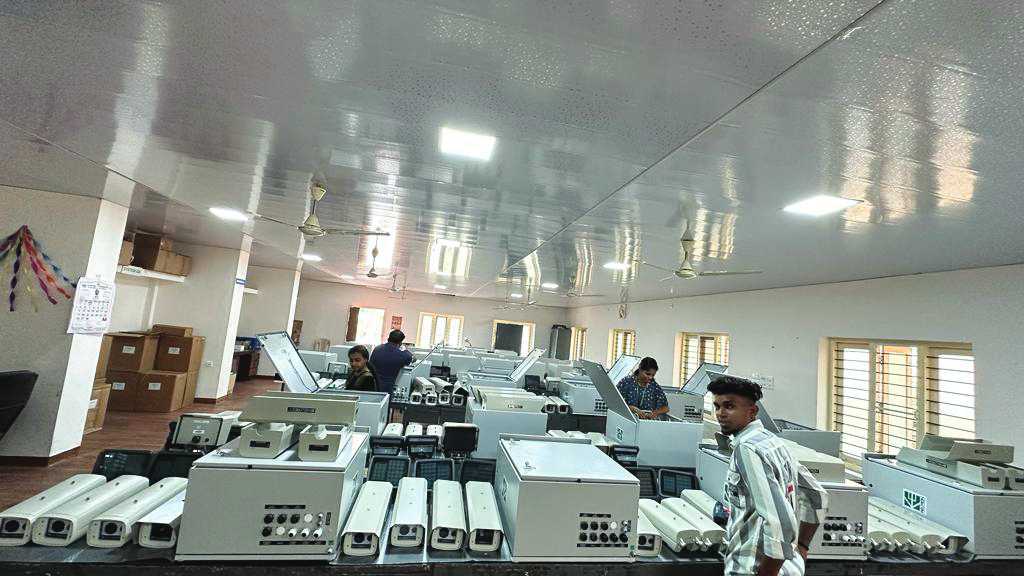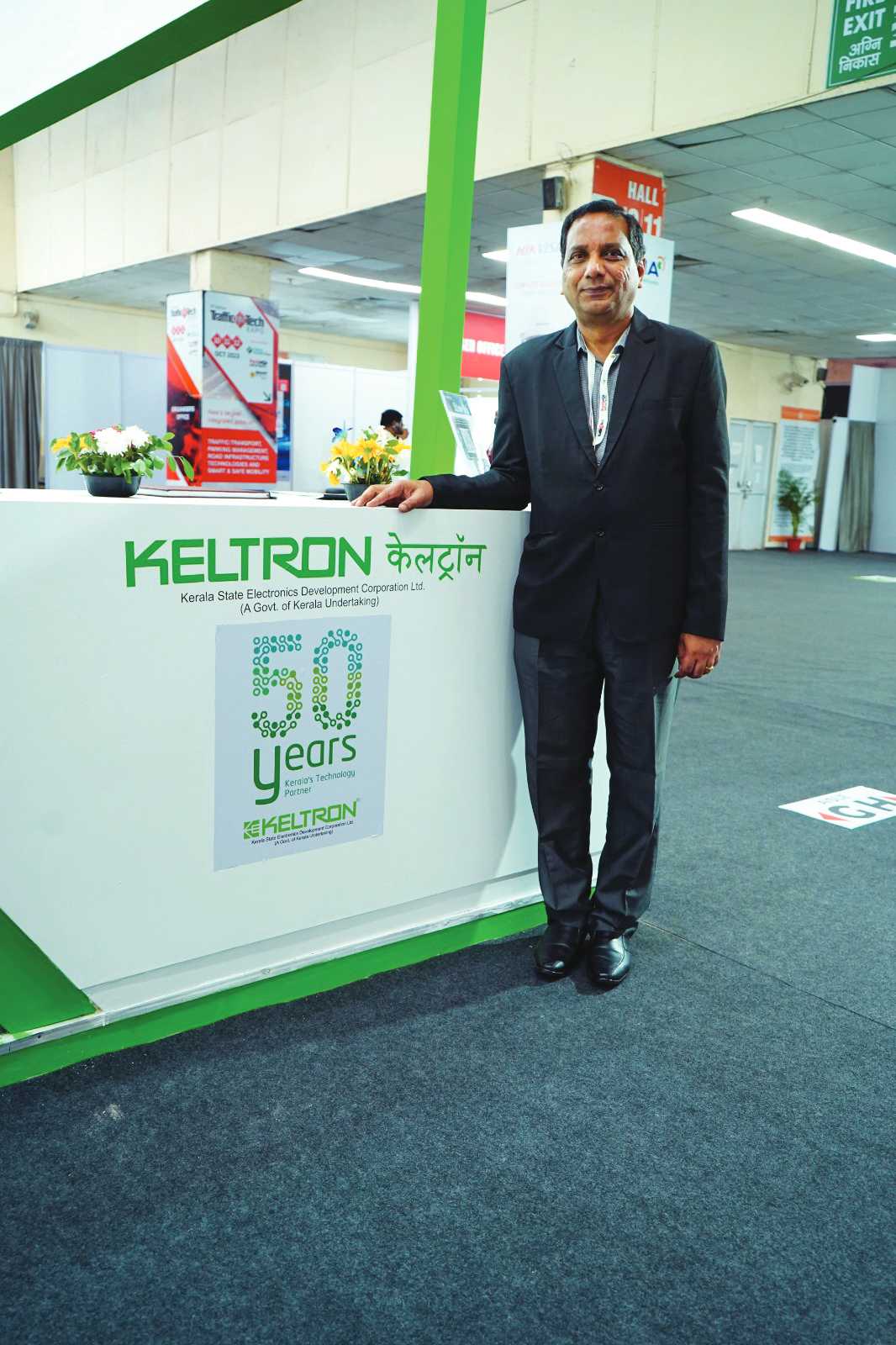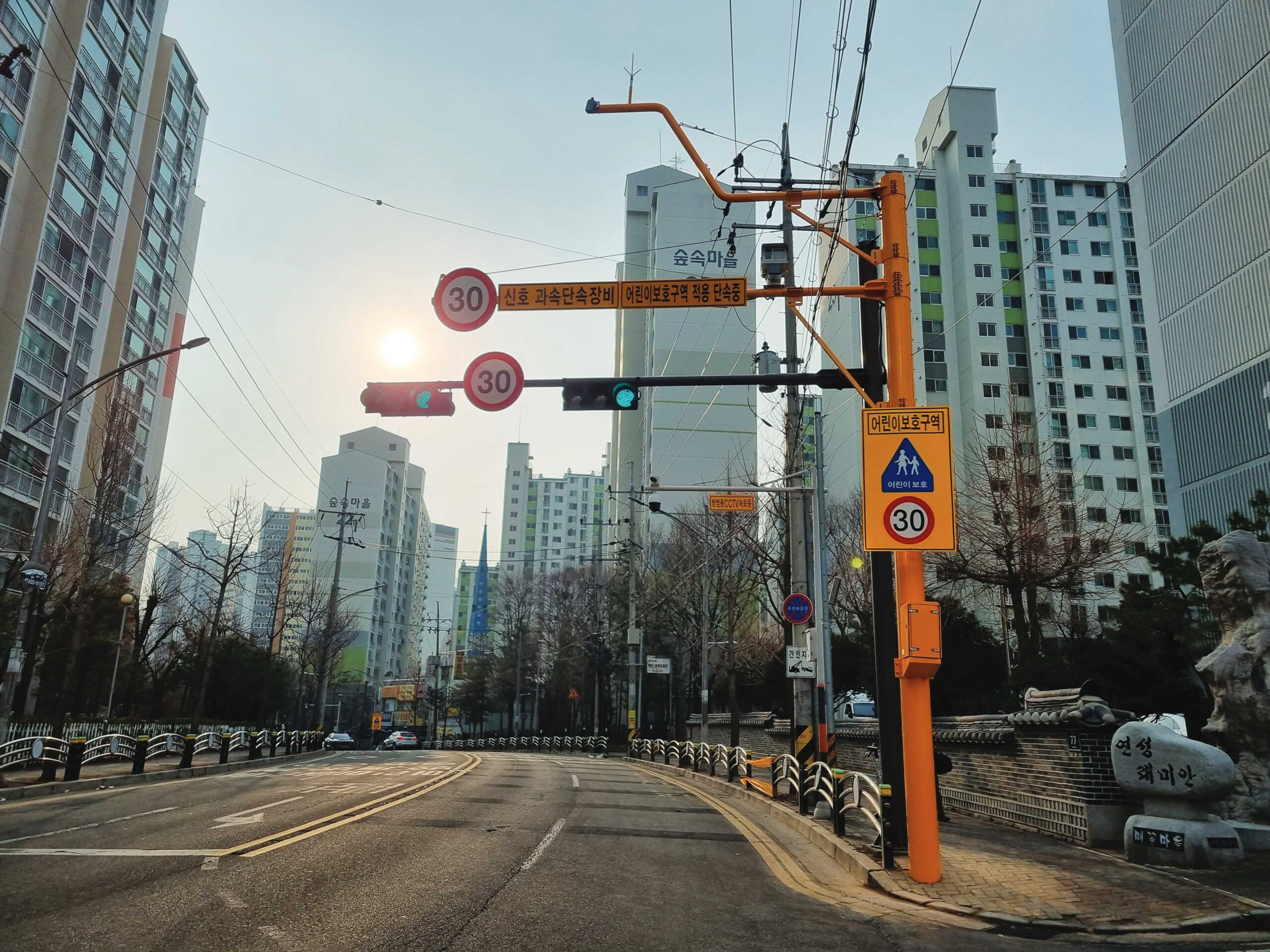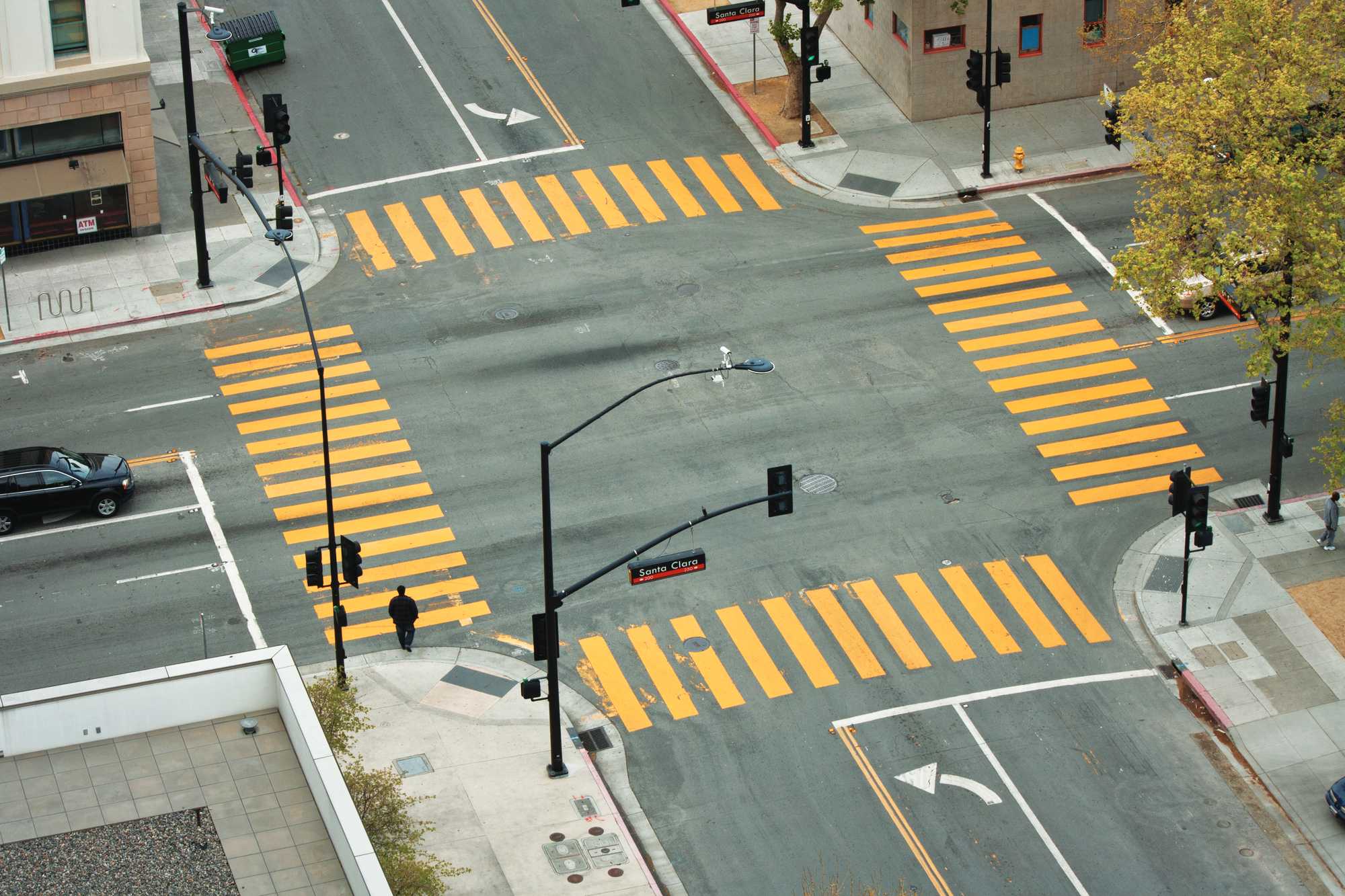
In the modern era of digital transformation, law enforcement agencies have increasingly turned to advanced technological tools to enhance public safety and enforce laws for the ever-increasing volume of vehicles. Among these tools, enforcement cameras have emerged as pivotal instruments. These devices can reduce the strain put on manual intervention, allowing effective monitoring of traffic and other public areas. Traffic enforcement – in its present state – cannot keep up with reckless driving, violations in hotspots, and the sheer volume of citations required. All these factors have combined to create a perfect storm in Indian traffic management. Combating this will require efficiency, data, and advanced technology. Is the market ready for these changes? Sid Jalan analyses camera technologies for traffic regulations enforcement taking inputs from the leading industry experts.
The Indian government, along with various public and private sector entities, is actively promoting the development and adoption of IoT and AI-based solutions for traffic management. Initiatives such as the Smart Cities Mission and partnerships with technology companies aim to modernise urban infrastructure and enhance the quality of life in Indian cities.
– Tushar Ranjan
According to Statista, the video surveillance camera market was valued at 35 billion USD in 2022. Forecasts predict that it will grow to over 62 billion USD by 2027. Additionally, the numbers around the traffic management market are also witnessing a surge – growing from USD 42.3 billion in 2023 to USD 72.5 billion by 2028 at a CAGR of 11.4%. Tushar Ranjan, Business Head, Rexgen states that the estimated growth in the traffic enforcement camera sector is estimated to develop at a 12.81% compound annual growth rate (CAGR) between 2024-2032.
So, what growth opportunities are driving these numbers?
The loudest calls for change are coming from citizens, who are demanding that governments address the issues of road safety, urban congestion, and traffic violations. To do so, investments must be made for the development of smart traffic enforcement and parking solutions. It has also created opportunities for companies to offer advanced features such as speed detection, red light enforcement and licence plate recognition.
A second, but equally compelling reason for the growth in this space is the emergence of smart cities. These connected cities offer opportunities to innovate and help drive the deployment of traffic monitoring solutions and advanced infrastructure.
Thirdly, Governments are also expanding automated enforcement programs for traffic fines and penalties, which require technologies such as speed cameras and ANPR cameras. In order to capitalise on these growth opportunities, companies should examine the technologies trending in the sector.
Data privacy concerns have consistently emerged regarding the deployment of Facial Recognition Technology across various domains. Nevertheless, governments have been actively striving to introduce legislation aimed at safeguarding data integrity.
– Prashant Oberoi
Prashant Oberoi, Director – India & SAARC, Norden Communication, says, “It is impossible to quantify the value of a human life saved through cost-benefit analysis. Additionally, we have observed cities successfully reducing road accidents by 10-30%. Considering these statistics, the investment needed for implementing and maintaining such technology falls within the budgets of cities and states.”
Technology that is transforming the Indian Traffic
The integration of autonomous and connected vehicle technologies is set to transform traffic management strategies and infrastructure significantly across India. These advanced technologies are expected to enhance the efficiency and safety of transportation systems, adapting to the dynamic needs of traffic management.
Meanwhile, the adoption of cloud-based video analytics marks a revolutionary shift for enforcement agencies. This technology offers a centralized platform to manage, scale, and extract data-driven insights from extensive traffic camera networks, enabling more sophisticated, data-driven approaches to managing traffic flows.
Indian companies are also developing innovative technologies tailored to the region’s specific traffic challenges. These include Smart Traffic Management Systems that use IoT sensors, cameras, and AI algorithms to optimize traffic flow, adjust signal timings in real-time, and detect traffic violations instantly. AI-powered Traffic Analytics also play a crucial role by enabling enforcement agencies to predict and manage congestion effectively.
As these technologies mature, we would be in a better position to address privacy concerns which arise. With continuous engagement with the government authorities, we are sure robust frameworks which balance privacy and system efficacy would be chalked out.
– Anoop Alexander
Anoop Alexander, Sales Engineer, Uncanny Vision, feels that “the USP of technology powered by AI is that they are very adaptable and can also be improved with data to adjust to different scenarios. Visual AI would be able to provide valuable insights as long as the clear and crisp image input is provided”.
Furthermore, IoT-based Smart Parking Solutions are being implemented to alleviate congestion by informing drivers about available parking spaces in real-time, thus streamlining the parking process and reducing traffic volumes. Additionally, some Indian cities are developing Integrated Transportation Platforms that connect various public transportation modes – such as metros, buses, and ridesharing services – through IoT technology. This facilitates seamless multi-modal travel and significantly cuts down on congestion.
Hikvision’s Incident Detection products are powered by tremendous amounts of video samples, multi-frame recognition, and deep-learning algorithms – these detection systems detect a range of incidents that effectively regulate driver activity, ensuring road safety and improving the conditions for law enforcement.
– Ashish Dhakan
Ashish P. Dhakan, MD & CEO, Prama Hikvision India states that traffic command centres are helping authorities get real-time road status updates for smart decision-making and efficient enforcement with a unified command interface, enhancing safety levels by reducing serious accident ratios and guaranteeing smooth road operations.
AI algorithms are also making a significant impact on minimizing congestion, fuel consumption, and travel time. By analysing historical traffic data, weather forecasts, and current traffic patterns, these algorithms can anticipate congestion hotspots and recommend alternate routes to drivers, further optimizing traffic management. With these advancements, it is essential to closely examine the specific traffic enforcement cameras and technologies currently employed to fully understand their role and impact within India’s traffic management landscape.
Types of Cameras used in traffic enforcement
Law enforcement agencies deploy a variety of specialized camera technologies, each serving distinct roles in traffic management and law enforcement. One common type is the Red Light Camera, designed to enforce adherence to traffic signals. These cameras are strategically placed at intersections and high-risk areas where they capture snapshots of vehicles that violate red lights, issuing tickets instantly to the violators. This straightforward mechanism plays a crucial role in reducing accidents and promoting compliance with traffic signals.
Speed Cameras are primarily positioned along highways and are instrumental in curbing reckless driving. Equipped with radar detectors, these cameras capture multiple images to determine a vehicle’s speed over time. If speeding is detected, the camera issues automatic tickets. These devices are particularly effective because they catch speeding drivers by taking two images at different points, using the distance travelled between these points to calculate the vehicle’s speed. As some of the most recognized traffic enforcement tools, they are essential for maintaining safe speeds on highways.
We would like to place on record that these systems developed by us for Traffic Enforcement has been working in the field for the past ten years without any issues. More than 5 million challans have been generated to book violators and has helped the law enforcers to reduce accidents in the state considerably.
– Subramaniam C.G.
Subramaniam C.G., General Manager and Head of Complex, Keltron, explains that the company has deployed state of the art Speed Violation Detection Systems (SVDS) and Red-Light Violation Systems (RLVDS) across high risk stretches of road (over 700 kilometres) identified by the Kerala Police and Motor Vehicle Department officials. The systems are user friendly and provide an end-to-end software solution for booking violations, ensuring automatic online payments.
Traffic Sensor Cameras, typically mounted at the top of traffic signals, monitor the flow of vehicles. Their primary function is to optimize the timing of red lights to prevent traffic jams, enhancing the efficiency of traffic management systems at busy intersections.
ANPR (Automated Number Plate Recognition) Cameras are another critical tool in the law enforcement arsenal. These cameras scan vehicle number plates to pull up linked information, helping officers identify and take appropriate actions against potential offenders. This technology is vital for automated record-keeping and effective law enforcement and is also effective in parking lots.
Mobile Cameras are used by local police and traffic enforcement officials, particularly in responding to road traffic incidents. These cameras are often mounted in police vehicles, providing flexibility to conduct real-time surveillance across different locations. This mobility is crucial for monitoring widespread areas and ensuring public safety.
As technology evolves, the traffic enforcement industry continues to innovate, leading to significant improvements in both equipment and infrastructure. These advancements promise to enhance the effectiveness of traffic management systems and support law enforcement in maintaining road safety and order.
According to Subramaniam, the company has completed the “supply and installation of ANPR Cameras, SVDS, RLVDS, MSVDS in the entire state of Kerala which is capable of No Seat Belt Detection, Helmetless Driving Detection, Driving with Mobile, Triple Riding, etc., as part of Safe Kerala Project which went live in June 2023”.
Latest innovations in the Space
Artificial Intelligence and Machine Learning (AI/ML) are revolutionizing traffic enforcement by empowering cameras to perform real-time analysis and make intelligent decisions. These technologies enable the cameras to dynamically adjust speed limits, send road condition alerts to drivers, and make informed decisions based on traffic flow, weather conditions, driving hazards, and driver behaviours. Furthermore, AI/ML enhances camera capabilities to recognise license plates, detect driver gestures, and identify safety violations such as seatbelt non-use or phone usage while driving.
Tushar Ranjan adds, “Machine learning algorithms are being employed to recognize patterns in traffic behaviour, allowing for predictive analytics to identify potential traffic congestion points, accident-prone areas, or patterns of non-compliance.”
This is bolstered by the introduction of Internet of Things (IoT) and Edge Computing, significantly enhancing traffic management systems. These technologies allow cameras to communicate with each other and synchronize with other devices, such as traffic lights and sensors, enhancing coordination and efficiency. Edge computing, in particular, reduces latency, conserves energy, and minimises bandwidth usage, adding reliability and scalability to the infrastructure.
The role of sensors in traffic enforcement is increasingly prominent. Cameras equipped with smart sensors and connectivity features can interact seamlessly with various traffic management devices, optimizing traffic flows, identifying abnormalities, and coordinating real-time responses.
Advancements in camera technology are also setting new standards. Features such as high-definition video, low-light capabilities, and wide-angle lenses are becoming commonplace. Traffic cameras now possess enhanced low-light imaging, allowing for the capture of detailed images under minimal light. This is facilitated by advanced sensors that adjust the camera’s sensitivity, improving pixel density without compromising image quality. Additionally, cameras offering 360-degree coverage provide a comprehensive view of traffic conditions, minimizing blind spots and increasing the detection of violations.
Prashant Oberoi highlights the impact of these technological advancements, particularly noting the utility of Global Shutter Cameras combined with Pulse IR Illuminators. These cameras can monitor multiple lanes simultaneously, capturing various violations – such as speeding, lane indiscipline, and unauthorized stops – which previously required several cameras with rolling shutter technology. This integration not only conserves power and reduces network infrastructure and storage needs but also significantly lowers costs while boosting Return on Investment (ROI).
Ashish Dhakan, shares, “For security applications, perception capabilities are going far beyond visible light, extending out along the electromagnetic spectrum to expand the capabilities of perceiving the physical world in new ways. And these multi-dimensional perception capabilities also converge to create innovative solutions that can accomplish a multitude of new operations, such as radar assisted video systems for perimeter protection, integration solutions of video and sonar arrays for traffic management applications.”
Lastly, cloud-based technology is becoming pivotal in managing the extensive data generated by these systems. It enables enforcement agencies to store vast amounts of video data securely, access it remotely, and facilitate seamless coordination among different stakeholders. However, managing the security of this data remains a crucial challenge in the sector.
Subramaniam elaborates, “The IARP project will be implemented in various cities across the state. The Integrated Accident Reduction Project (IARP) aims to improve traffic safety and traffic rules/law enforcement by harnessing information gathered from video and other road-safety sensors posted at various intersections throughout the cities. This involves installing, if not present already, and maintaining the heterogeneous camera and sensor network. The project envisages identification of accident hotspots and placing them under coverage with total AI camera-based surveillance, deployment of Automatic Number Plate Recognition (ANPR) cameras, and setting up an Integrated Smart Control Room for the purpose of facilitating the project implementation. By choosing a fully digital integrated surveillance system, the law enforcers can view the happenings in the city from the integrated Control Room and take appropriate measures to curb offences and ensure safety of the citizens.”
Privacy, Security and Ethical Concerns
In order to be effective, traffic cameras collect large volumes of data, including personal data. Everything from licence plate numbers to vehicle images, speed, travel patterns and location information is stored. This data can be mined for personal details such as driver identity, preferences, habits and associations. Additionally, private information can then be shared, accessed and misused by bad faith actors without the knowledge and consent of the individuals concerned.
Governments will also need to keep an eye on the legalities of proceeding, particularly when it comes to cross-border or multi-jurisdictional incidents. For instance, cameras can capture information about vehicles that are registered in different states or countries, each of which have different laws and regulations around data privacy, traffic violations or penalties. There are more fundamental questions to be asked around the right to privacy, presumption of innocence and the right to due process.
Addressing these challenges will require multiple steps. Further collaboration between stakeholders – governments, enforcement agencies, NGOs – will be crucial to ensure more transparency. This also requires clearer regulations regarding the use of data and sharing between agencies. Governments should also run campaigns and educate the public on the importance of traffic cameras in order to build support for initiatives.
Challenges Around Camera Installation
The installation of enforcement cameras presents a series of significant challenges that can impact their effectiveness and operational efficiency. One of the primary challenges is balancing the cost versus coverage. The financial burden of installing a widespread network of cameras is considerable, and the necessity for extensive coverage to ensure the effectiveness of these systems further compounds the challenge.
Ashish Dhakan adds, “The successful implementation of the project plan depends largely on combining local knowledge of the city traffic conditions, credible traffic enforcement technologies, using proven traffic modelling approaches to guide the thinking process, proposing aggressive mitigation measures to minimize the impact of the project with such a large size, and managing a large number of stakeholders efficiently and concurrently.”
Additionally, environmental conditions pose a significant hurdle. Cameras must be robust enough to operate reliably under various lighting conditions and in all-weather types, which can complicate both the installation and ongoing maintenance processes. This requirement for durable and adaptable technology can drive up the initial investment
and operational costs. Geographical limitations also affect camera effectiveness.
Cameras installed on non-straight roads or in areas with complex topographies may not function as effectively, potentially leading to gaps in coverage and reduced surveillance capabilities. Drivers could choose to slow down before the camera, and then accelerate afterwards. AI cameras are also subject to accuracy errors, existing bias and, of course, the previously discussed issue of privacy. Such limitations necessitate strategic planning and potentially more sophisticated and therefore costly equipment to ensure comprehensive monitoring.
Moreover, regular maintenance is crucial for the sustained operation of enforcement cameras. Consistent checks and repairs are necessary to address any issues arising from environmental wear and tear or technical failures. This ongoing maintenance not only ensures that cameras remain functional and effective but also adds a recurring cost that can strain budgets over time. Each of these challenges must be carefully considered and managed to maximize
the benefits of camera enforcement systems while minimizing their drawbacks.
In order to overcome challenges like these, camera installation will need to be approached carefully.
Smart City Integration
CCTV and traffic enforcement cameras play a vital part in smart cities, offering real-time information on traffic conditions, accidents (notifying emergency services), violations and emissions. This data – rich in insights – can be used to optimise traffic, improve road safety, cut down the environmental impact and enhance mobility and accessibility.
Says Tushar Ranjan, “Camera technologies are increasingly integrated into broader smart city initiatives, leveraging data analytics and interconnected infrastructure to optimise traffic flow, enhance safety, and reduce congestion. These innovations in camera technology are expected to significantly enhance the efficiency, accuracy, and effectiveness of traffic monitoring and enforcement efforts worldwide, contributing to safer and more sustainable urban mobility systems.”
In Singapore, a network of traffic cameras has been implemented that detects and responds to traffic incidents and enforces traffic rules. These smart traffic solutions are also integrated with smart city systems, such as parking, public transport and emergency services. According to Prashant Oberoi, “Smart cities have already proven the efficacy of traffic enforcement technologies through significant reductions in accidents and casualties. Furthermore, the absence of human intervention in enforcing these violations contributes to cleaner governance.”
The Government taking steps to improve camera enforcement?
The Government of India is well aware of the benefits of CCTVs and traffic camera enforcement. Crucially, they enacted the Motor Vehicle (Amendment) Act in 2019, focusing on road safety by setting up stringent penalties for traffic violations. Section 136A of the Amendment Act enables State Governments to provide for electronic monitoring and enforcement on National Highways, State Highways, roads or in Urban cities within the state. Furthermore, the latest road and bridge specifications allow for the installation of Advanced Traffic Management Systems on National Highways. This includes provisions for CCTV cameras and speed cameras.
CCTVs in traffic enforcement do have inherent challenges that need to be addressed. However, given the rise of smart cities, the increasing need for smart traffic solutions, the growing calls for road safety, and the creation of advanced CCTV technologies, it seems like they are well on their way to becoming an essential part of traffic management.
 TrafficInfraTech Magazine Linking People Places & Progress
TrafficInfraTech Magazine Linking People Places & Progress






